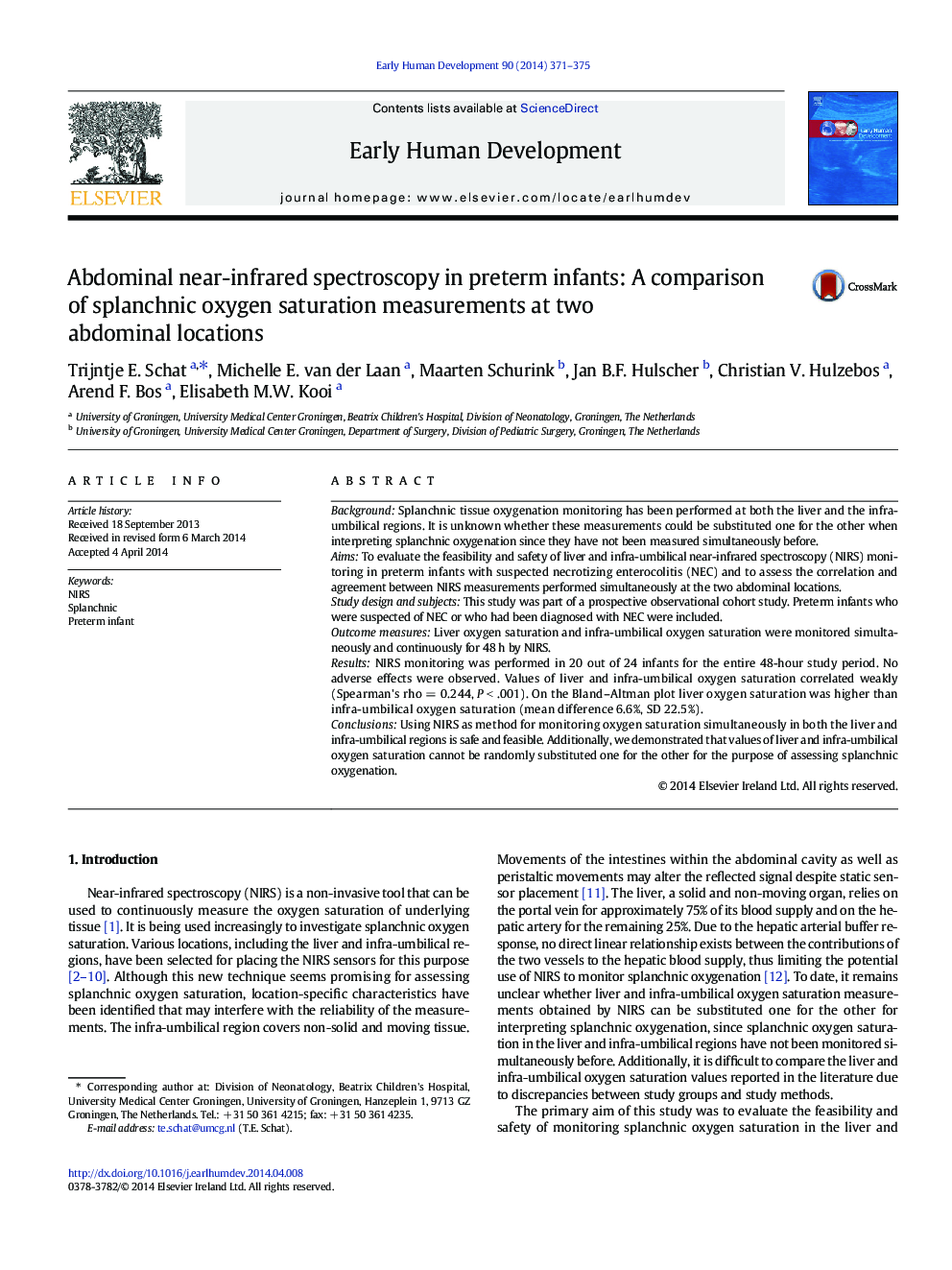| Article ID | Journal | Published Year | Pages | File Type |
|---|---|---|---|---|
| 3916584 | Early Human Development | 2014 | 5 Pages |
BackgroundSplanchnic tissue oxygenation monitoring has been performed at both the liver and the infra-umbilical regions. It is unknown whether these measurements could be substituted one for the other when interpreting splanchnic oxygenation since they have not been measured simultaneously before.AimsTo evaluate the feasibility and safety of liver and infra-umbilical near-infrared spectroscopy (NIRS) monitoring in preterm infants with suspected necrotizing enterocolitis (NEC) and to assess the correlation and agreement between NIRS measurements performed simultaneously at the two abdominal locations.Study design and subjectsThis study was part of a prospective observational cohort study. Preterm infants who were suspected of NEC or who had been diagnosed with NEC were included.Outcome measuresLiver oxygen saturation and infra-umbilical oxygen saturation were monitored simultaneously and continuously for 48 h by NIRS.ResultsNIRS monitoring was performed in 20 out of 24 infants for the entire 48-hour study period. No adverse effects were observed. Values of liver and infra-umbilical oxygen saturation correlated weakly (Spearman's rho = 0.244, P < .001). On the Bland–Altman plot liver oxygen saturation was higher than infra-umbilical oxygen saturation (mean difference 6.6%, SD 22.5%).ConclusionsUsing NIRS as method for monitoring oxygen saturation simultaneously in both the liver and infra-umbilical regions is safe and feasible. Additionally, we demonstrated that values of liver and infra-umbilical oxygen saturation cannot be randomly substituted one for the other for the purpose of assessing splanchnic oxygenation.
